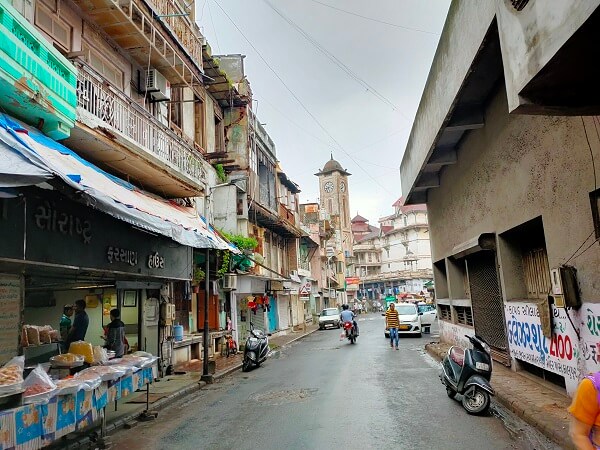Ahmedabad: Temple to mosque
Steeped in tradition and history, Old Ahmedabad is noted for its beautiful Indo-Islamic architecture.
History has always fascinated me. That’s why the past, culture and history of any city I visit interests me. For the same reason, ruins, old buildings such as havelis and forts as well as old architecture has always attracted me more than flashy malls, luxury hotels or sky-scrapers. On a visit to Ahmedabad, the Capital city of Gujarat, during Navratra festival, we took time out to wander around the city. Situated on the bank of Sabarmati river, the city has many attractions, including Gandhi Ashram, the abode of Mahatama Gandhi. We covered almost every destination ~ river front, Sabarmati Ashram, temples and market. And then what? Our driver suggested a heritage walk of old Ahmadabad. “This is a two-hour walk, which would take you on a discovery of a city, with ancient tradition, wonderful architecture of Indo-Islamic period, intricately-designed places of worship, carved wooden houses of ‘pol’, a rich textile heritage and lots more,” he enticed us. And so we were up early next morning to join the heritage walk, which begins at 8.00 in the morning.
Also read: Delhi’s Jama Masjid: An architectural marvel

The walk

Our two-hour sojourn began with a small presentation depicting the history of Ahmedabad city. The 10-minute video informs how the city was founded in 1411 by king Ahmedshah Badshah, whose name the city carries. There is a saying on the formation of Ahmedabad: “Jab do kutte pe sassa aya, tab badshah ne shahar basaya (Seeing the rabbits more powerful than dogs, the king decided to build the city)”. The walk begins with the serene Swaminarayan Mandir and ends at the magnificent Jumma Masjid. Therefore, many people also call this a walk from temple to mosque. During the walk, we came across many pols, havelis, ornamental facades, chabaturas (bird-feeders) and workplaces of artisans. Our first stop was at Kavi Dalpatram Chowk, which housed the great 19th century Gujarati poet Lambeshwar ni Pol. He was a reformist, who played a vital role to promote Gujarati language. To celebrate his achievements, Ahmedabad Municipal Corporation (AMC) has renovated his house and installed his statue. Another fascinating point was the hundred-year-old Kala Ramji Mandir at Haja Patel ni Pol, located amid congested lanes inside a huge haveli. The strange thing about the temple is its idol of Rama, which is black in colour. The pujari informed that since Mughals used to destroy temples they were carefully designed and built. Mughals would not enter a gate in which they had to bend their head and so the entrances of the temples were made low.
Also read: Kashmir: Paradise in every aspect
.jpg)

The other major attraction was the Harkunvar Sethani ni Haveli, one of the oldest three-storey buildings. Then there is Rani no Hajiro, where the dead bodies of queens and kings were burried in earlier times. However, these days, the place is famous for jewellery, dresses and other handicraft items. The last but one stop was at Manek Chowk ~ a city square surrounded by historical structures. It has a unique feature ~ a vegetable market in the morning, a bullion market in the noon and street food market at night. Last but not the least, was the splendid Juma Masjid, built in 1424 during Ahmed Shah’s reign.
Also read: Mandawa: A desert jewel
Fascinating architecture
Throughout the walk one could notice different types of architecture, including a beautiful combination of Persian, British, Mughal and Maratha in one specific passage of a “pol”. It is not hard to differentiate the different architecture. For instance, Persian building depicts grapes vines in the bracket design, Mughal architecture can be seen by observing the window patterns, bricks are from British period and Marathas had a symbol of Peshwas on their entrance. At the same time, one can find reflection of Jain and Ahmedabadi architecture in the Juma Masjid ~ there are icons of “kalash” and “kalpavriksha” embedded in its walls.

Pols: These are like colonies, where a group of people of the same caste tend to live together. Every pol has a bird feeder (chabutaro), temple, a common plot, a security cabin, an entrance and some houses. The guide informed us that all the pols are connected by a secret path.
Chabutaro: This is a bird feeder. It’s shaped like a tree, narrow from below and wide above.
Also read: Odhisha: Hidden treasure in the East
.png)
